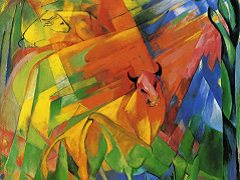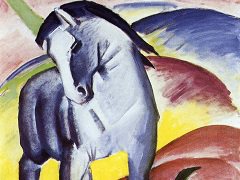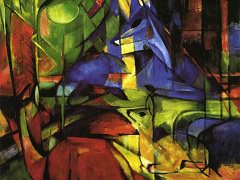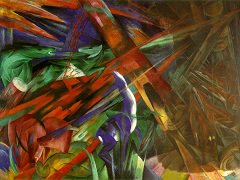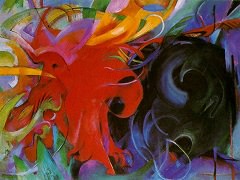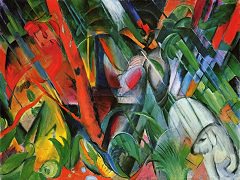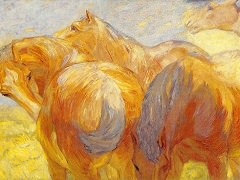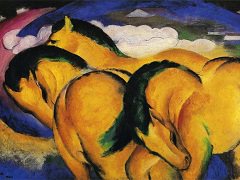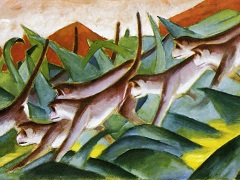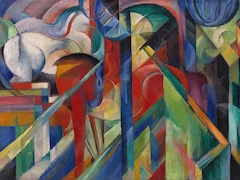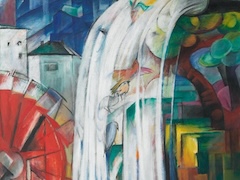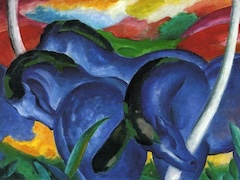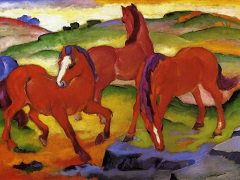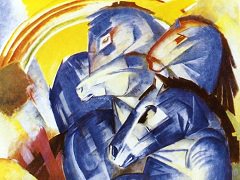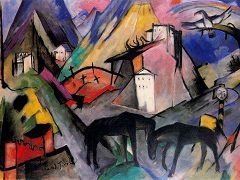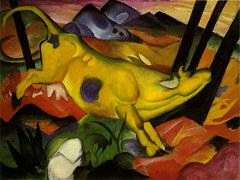The Little Blue Horses, 1911 by Franz Marc
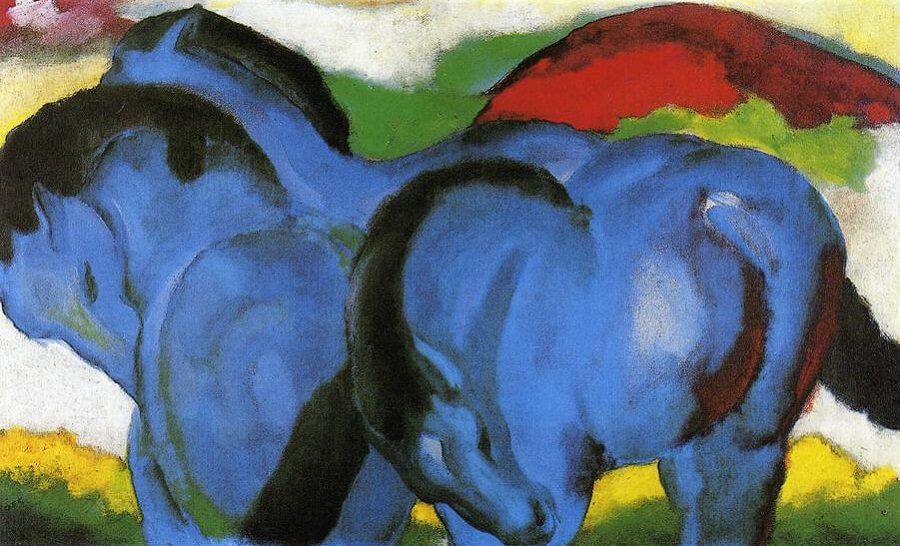
During the early years of the twentieth century, a back-to-nature movement swept Germany. Artists' collectives and nudist colonies sprung up in agricultural areas in the conviction that a return to the land would rejuvenate what was perceived to be an increasingly secularized, materialistic society. A seminarian and philosophy student turned artist, Franz Marc found this nature-oriented quest for spiritual redemption inspiring.
Franz Marc's vision of nature was pantheistic; he believed that animals possessed a certain godliness that men had long since lost. "People with their lack of piety, especially men, never touched my true feelings," he wrote in 1915. "But animals with their virginal sense of life awakened all that was good in me." By 1907 he devoted himself almost exclusively to the representation of animals in nature. To complement this imagery, through which he expressed his spiritual ideals, Marc developed a theory of color Symbolism. His efforts to evoke metaphysical realms through specific color combinations and contrasts were similar to works of Wassily Kandinsky, with whom, in 1911, he founded the Blue Rider, a loose confederation of artists devoted to the expression of inner states.

